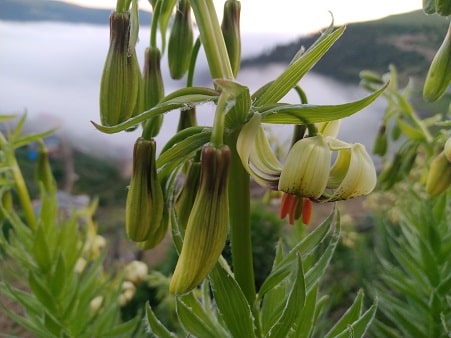What is the difference between Liliales and asparagales?
How are Asparagales different from Liliales? What is the common name for Asparagales? What is another name for Asparagaceae? What type of fruit is Asparagales? The natural habitats where Liliales grow can vary widely, from temperate regions to tropical and subtropical areas. Some Liliales species thrive in mountainous regions, while others are found in grasslands, forests, and even desert environments. Additionally, some species within Liliales are adapted to specific soil types, moisture levels, and light conditions, allowing them to occupy various ecological niches.
Liliales and Asparagales are both orders of flowering plants (angiosperms) within the class Monocotyledons (Liliopsida). Despite their similarities, they represent distinct taxonomic groups with some differences in their characteristics and floral structures.
Liliales:
- Characteristics: Liliales is an order of monocots that includes plants with diverse growth forms, including herbaceous perennials, bulbs, and rhizomatous species. Some common plants in this order are lilies, tulips, and orchids.
- Floral Structure: Flowers in Liliales are typically composed of six tepals (petals and sepals that look alike), which are often large, colorful, and showy. The flowers have three distinct carpels (female reproductive structures) and three separate stamens (male reproductive structures).
- Leaves: The leaves of plants in Liliales are generally parallel-veined, meaning the veins run parallel to each other along the length of the leaf.

Asparagales:
- Characteristics: Asparagales is another order of monocots that includes a wide range of plants, including many ornamental species, as well as economically important plants like asparagus, garlic, and onion.
- Floral Structure: Flowers in Asparagales can vary in their structure. They typically have six tepals, similar to Liliales, but the tepals can be more fused or differentiated into sepals and petals. The flowers can have three or more carpels and three stamens.
- Leaves: The leaves of plants in Asparagales are often narrow and elongated, with parallel venation, similar to those in Liliales.
In summary, the main difference between Liliales and Asparagales lies in the floral structures. Liliales typically have flowers with six showy tepals, three distinct carpels, and three separate stamens, while Asparagales can have flowers with six tepals that may be more fused or differentiated, and varying numbers of carpels and stamens. Both orders encompass a wide diversity of plant families and species, and their classification is based on various morphological, genetic, and evolutionary characteristics.
Information about Liliales
Liliales is an order of flowering plants (angiosperms) belonging to the class Monocotyledons (Liliopsida). It is a diverse group that includes various plant families, many of which are well-known for their ornamental value and economic importance. Liliales encompass plants with diverse growth forms, including herbaceous perennials, bulbs, and rhizomatous species. Here are some key points about Liliales:
- Floral Structure: Flowers in Liliales are typically composed of six tepals, which are petal-like structures that may look alike and are often large, colorful, and showy. The term “tepal” is used when petals and sepals cannot be easily distinguished. This is a defining feature of the order.
- Reproductive Structures: Liliales have three distinct carpels, which are the female reproductive structures, and three separate stamens, which are the male reproductive structures. This arrangement is common in many members of the order.
- Families: The order Liliales comprises several families, with some of the prominent ones being:
- Liliaceae: Includes true lilies, such as Lilium species.
- Amaryllidaceae: Includes plants like daffodils (Narcissus) and snowdrops (Galanthus).
- Orchidaceae: Includes the diverse and large family of orchids.
- Melanthiaceae: Includes species like Solomon’s seal (Polygonatum) and trilliums (Trillium).
- Distribution: Liliales have a global distribution, with various species found in different parts of the world. They are found in diverse habitats, including temperate, tropical, and subtropical regions.
- Economic Importance: Many plants in the order Liliales have significant economic value. For example, lilies and orchids are popular ornamental plants used in gardens and floral arrangements. Some members of Amaryllidaceae, such as garlic (Allium sativum) and onion (Allium cepa), are widely cultivated as food crops.
- Conservation: Some species within the order Liliales are listed as threatened or endangered due to habitat destruction and overexploitation. Conservation efforts are in place to protect rare and valuable species.
Overall, Liliales is an important and diverse order of flowering plants that includes many beautiful and economically significant species. The order’s plants play significant roles in horticulture, agriculture, and the natural ecosystems where they are found.
What are the families under Liliales?
As of my knowledge cutoff date in September 2021, the order Liliales includes several families, each containing different genera and species of flowering plants. The families under Liliales are as follows:

- Alstroemeriaceae: This family includes the genus Alstroemeria, commonly known as the Peruvian lily or lily of the Incas. These plants are known for their colorful and showy flowers.
- Colchicaceae: This family includes the genus Colchicum, which contains species commonly known as autumn crocuses or meadow saffron. These plants produce autumn-flowering crocus-like flowers.
- Corsiaceae: The family Corsiaceae is a small family of mycoheterotrophic plants that lack chlorophyll and obtain nutrients from fungi.
- Liliaceae: This is one of the largest families in Liliales and includes a wide variety of species. It includes true lilies (Lilium), tulips (Tulipa), fritillaries (Fritillaria), and many other popular ornamental plants.
- Melanthiaceae: This family includes plants like Solomon’s seal (Polygonatum), false hellebore (Veratrum), and trilliums (Trillium). Some members of this family contain toxic alkaloids.
- Petermanniaceae: This is a small family of flowering plants native to Chile and Argentina.
- Philesiaceae: Another small family of flowering plants found in South America, particularly in Chile and Argentina.
- Ripogonaceae: This family includes climbing and non-climbing herbaceous plants, primarily found in tropical regions.
- Smilacaceae: The family Smilacaceae includes plants like Smilax, which are woody or herbaceous vines with prickly stems.
It’s important to note that plant taxonomy is subject to revision as new research and discoveries are made. As a result, there might be updates or changes in the classification of certain plant families. For the most current and accurate information on the families under Liliales, it’s best to refer to the latest botanical resources and research.
Where do Liliales grow naturally?
Liliales is an order of flowering plants that grow naturally in various regions around the world. The distribution of Liliales is quite diverse, and different families within the order have adapted to specific habitats and climates. Here are some regions where Liliales grow naturally:
- North America: Many species of Liliales are native to North America. For example, species from the family Liliaceae, such as various lily (Lilium) species, are found across different parts of the continent. Other families, like Melanthiaceae, also have representatives in North America.
- South America: South America is home to numerous species of Liliales, particularly in countries like Chile and Argentina. Families like Alstroemeriaceae and Philesiaceae are found in South America.
- Europe: Several Liliales species are native to different parts of Europe. Countries like Turkey and the Balkan Peninsula are known for their diversity of wild lilies and other Liliales species.
- Asia: Asia is rich in Liliales diversity. Various species of lilies and other members of the order can be found across different regions of Asia, including China, Japan, the Indian subcontinent, and the Middle East.
- Africa: While Liliales are less diverse in Africa compared to some other regions, there are still some representatives of the order found on the continent. For example, species from the Colchicaceae family are found in Africa.
- Oceania: In Oceania, Liliales can be found in places like Australia and New Zealand. Some species from the family Colchicaceae are native to Australia.
The natural habitats where Liliales grow can vary widely, from temperate regions to tropical and subtropical areas. Some Liliales species thrive in mountainous regions, while others are found in grasslands, forests, and even desert environments. Additionally, some species within Liliales are adapted to specific soil types, moisture levels, and light conditions, allowing them to occupy various ecological niches.
It’s important to note that the specific distribution and diversity of Liliales species can be subject to change as new species are discovered or taxonomic revisions are made.





